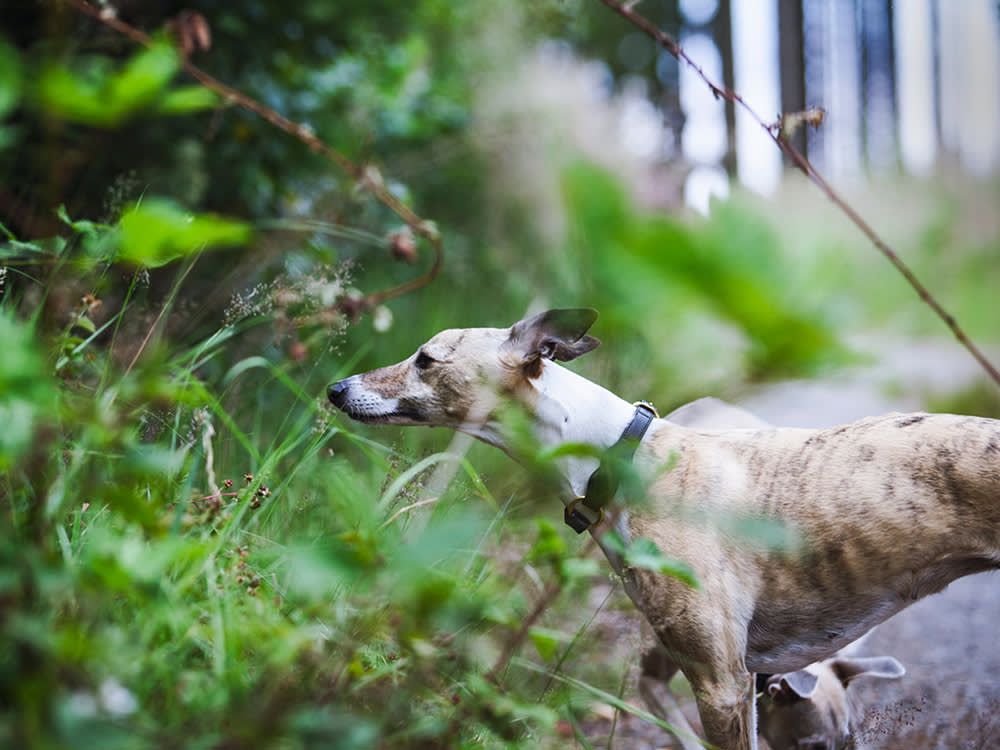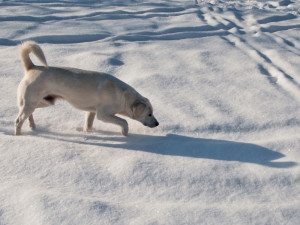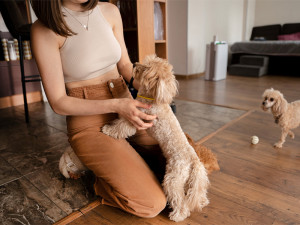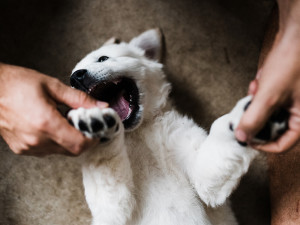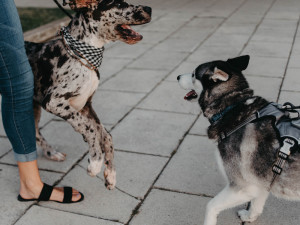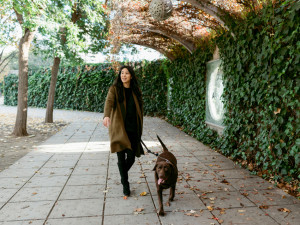Why Does My Dog Seem Hypnotised By Hanging Objects?
If your dog zones out under tree branches or dangling cloth, they might have Trance-like Syndrome
The first time you notice your dog slowly creeping beneath a low-hanging branch or a dangling tablecloth, head moving languorously side to side with a far-away look in their eye, you might worry that it heralds a seizure or points to obsessive-compulsive tendencies. But once the pup has performed this ritual repeatedly with no apparent ill effects to health (theirs) or property (yours), you may simply wonder what causes this hypnosis-like behaviour.
In fact, experts say that Trance-like Syndrome (TLS) – also referred to as ‘ghost-walking’, ‘weed-walking’ or simply �‘trancing’ – is usually a benign canine quirk. Though most common in Bull Terriers and sighthounds (such as Greyhounds and Salukis), TLS has been observed in multiple breeds and mixes. But why do our furry friends act this way in the presence of low-hanging objects, and are there any situations in which this ritual indicates an illness or behavioural issue?
What is trancing?
Experts refer to the manner in which dogs move while experiencing TLS as ‘hypokinetic gait’, incredibly slow pacing characterised by soft, deliberate footfalls. This slo-mo walk seems to be stimulated by the dog passing under a plant or fabric hanging at head or back height. In some dogs, the sensation elicits a glassy-eyed gaze and affects the way they position their faces. “Their ears will be completely flat to the head, nose pointed up to the sky and eyes squinted,” explains Dr Michelle Burch, DVM.
They may even pause their glacial mosey and stand totally still for several seconds before resuming their pacing. Uninterrupted, this blissed-out state can last anywhere from several seconds to half an hour, but is easily cut short by calling the pup’s name. Though some dogs may briefly exhibit annoyance at being yanked from their reverie, they quickly return to their normal selves.
Why do dogs do it?
Veterinarians and canine behaviourists are not sure what causes TLS. Seemingly, the light brush of clothes on the washing line or foliage against their bodies activates feelings of happiness and tranquillity. Some experts consider trancing to be a form of canine compulsive disorder, as many dogs who exhibit TLS are prone to other neurotic behaviours. There’s no conclusive evidence, however, that trancing is connected to a neurological issue. Unlike a seizure, a TLS ‘spell’ can be easily broken.
In most cases, TLS behaviour doesn’t mean anything’s wrong with the dog. Though it may appear strange and pose a mystery to canine experts, in and of itself, it’s not an indication of health or behavioural problems. “If you do not see any other symptoms associated with trancing episodes,” says Dr Burch. “I recommend not panicking and allowing them to finish their ritual.”
A visit to the veterinarian is in order only if the trance is accompanied by vomiting, excessive drooling, muscle spasms, unresponsiveness to outside stimuli or sudden unconsciousness. “Dogs who display such symptoms may have an underlying seizure disorder, metabolic abnormalities or organ dysfunction,” warns Dr Burch. It’s also a good idea to make certain that a dog’s trance trigger of choice isn’t potentially damaging to their skin; a ‘massage’ from a poisonous shrub, for example, could produce a painful rash.
So, if you spot your fuzzy pal inching past the coat rack, running their back along jacket bottoms and scarves with a dreamy look on their face, don’t worry. It’s fairly safe to assume that their behaviour, though odd, is entirely harmless.
